The first aid steps in time when the hand jammed into the door gap
Unfortunately, if you pinch your fingers or the whole hand when closing the door, or feel that heavy objects fall into your fingers, it will be extremely painful because the fingertips and toes are the places where many nerve endings are concentrated. and receptor organs. Therefore, each of us needs to know how to timely administer these cases to reduce pain and sequelae. In addition, depending on the severity of the situation, you may need to seek professional medical assistance to prevent long-term pain or injury. However, if in some cases it is not necessary to see a doctor, there are procedures you can use to deal with pain at home. Please refer to the order of first aid steps when your finger is broken in case of unfortunately below!
Part 1: Deal with pain
1. Apply ice to the injured area

For medical reasons, the first thing you need to do after getting stuck in the door gap is to apply ice to the injury area. However, apart from medical reasons, the cold temperature of ice will help numb your hands after applying ice for long enough. Although initially, the harsh cold of ice cubes may be uncomfortable or painful but you should try to overcome and keep the stone at the position of injury. After that, you will gradually lose feeling - including pain - in an ice-covered area.
2. Keep calm
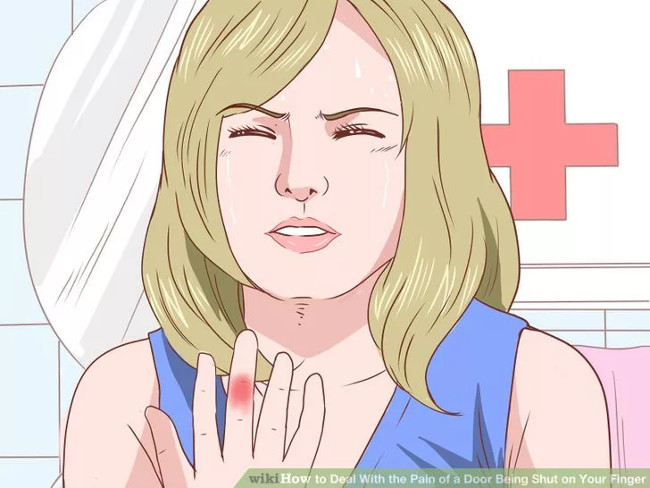
Usually, your first action will be panic, but try to calm yourself down so that you don't get too excited. Agitation can increase blood circulation and lead to more dangerous swelling. In addition, research has shown that anxiety increases the perception of pain, although in practice the problem focuses on chronic pain rather than acute trauma. Moreover, keeping calm will help you maintain concentration and manage pain in a shorter time.
3. Taking over-the-counter pain relievers (OTC)
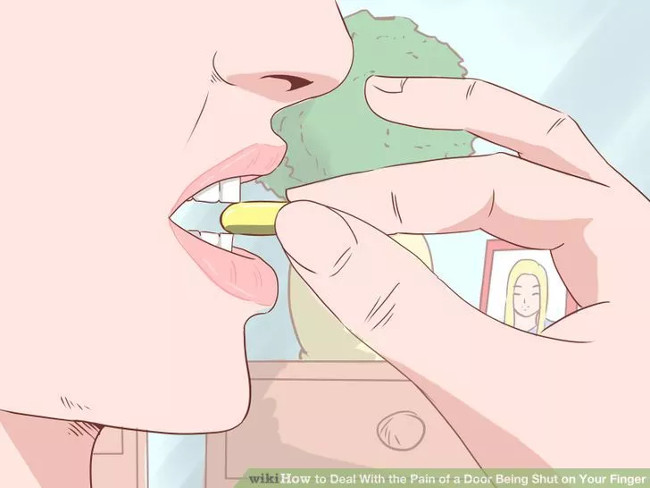
For serious injuries, you should see your doctor so you can treat your injury in time and prescribe more severe pain medicine for you. However, for a more manageable situation, over-the-counter pain relievers will help you cope with the pain quickly. Usually, over-the-counter pain relievers can be acetaminophen (Tylenol, Panadol, etc.) or ibuprofen (Advil, Motrin, etc.).
- Take the medicine as directed. You need to take acetaminophen after 4-6 hours each time and ibuprofen after 6-8 hours each time.
- If you have stomach, kidney or pregnancy problems, do not take ibuprofen without consulting your doctor before use.
- People with liver disease should not take acetaminophen.
4. Focus on the breath
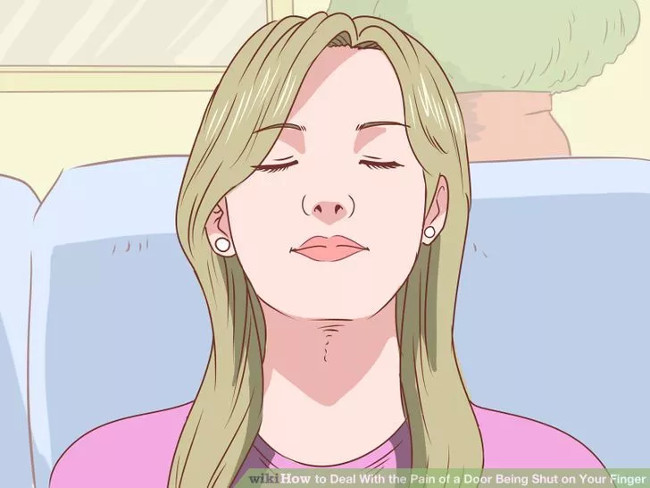
Deep breathing will help you calm down and lower your heart rate. Focus on sensing the air at each stage of the respiratory process - you will feel how the air enters your nose, holding it in your chest, when it quickly escapes through the nose or through mouth. Focus on thinking about these feelings instead of any other factor.
- Breathe deeply into your body slowly so that your belly swells, not your chest.
- When you breathe in the air, hold your breath for a few seconds.
- Breathe slowly and slowly, controlling the amount of air instead of allowing them to escape at the same time.
- When the exhalation is complete, stop for a few seconds before continuing this breathing cycle.
- Repeat this process until you are comfortable in releasing your attention.
5. Self-distraction for yourself
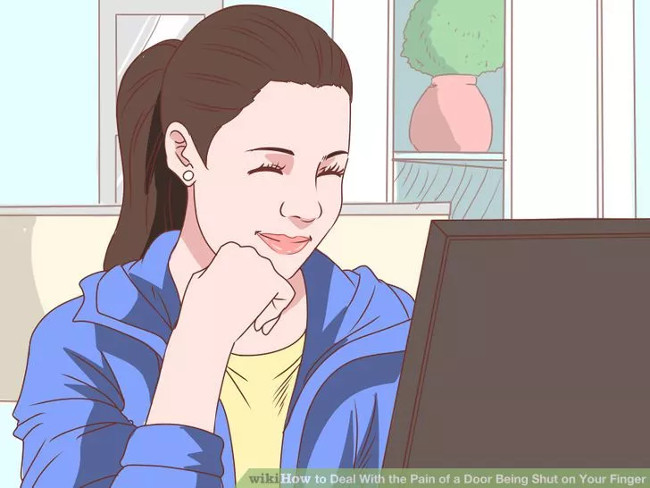
In order not to think about the painful pain, you should pay attention to another stimulus, attract your senses like listening to your favorite music album, watching TV or movie shows, chatting with someone, actually now works gently without causing stress to the hands, for example walking. Research has shown that focusing 5 senses will make pain more manageable.
6. Visualize food
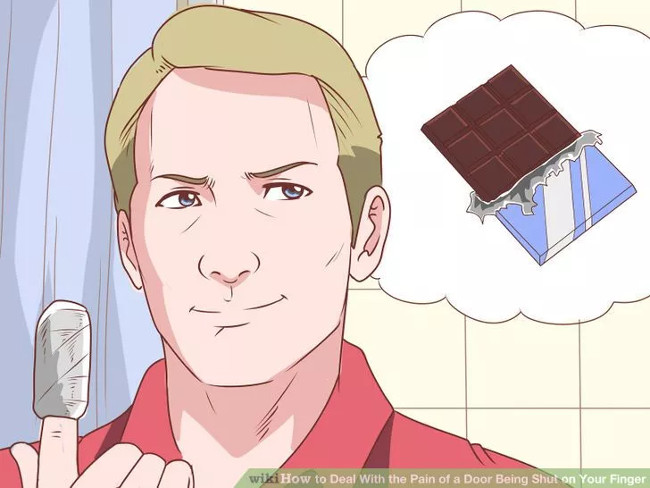
Previous research has shown that the use of guided imaginative methods in which a person or a sound recording helps a person suffering from pain focuses on mental relaxation images to relieve pain. Chronic and acute. However, recent research indicates that just figuring out your favorite food will have the same effect without any additional help or guidance from outside. Just imagine being able to enjoy your favorite foods in detail - whether it's cheese or cheese sandwiches - imagine its taste and feel. Allow these happy thoughts to take over your mind and the pain will automatically dissolve.
Part 2: Addressing medical concerns
1. Apply ice immediately
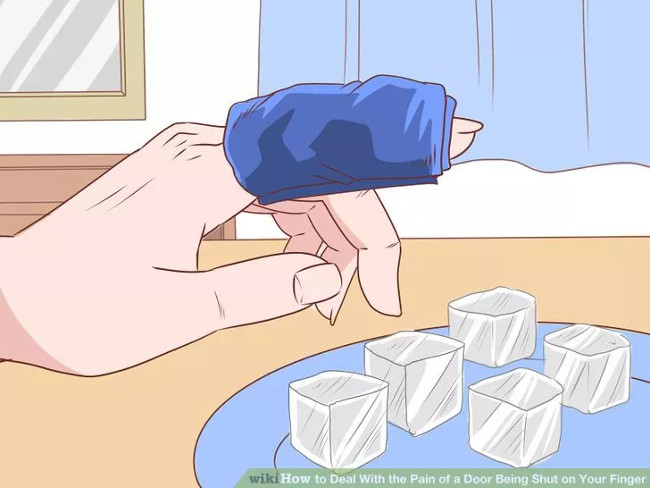
The most important step after an injury is to apply ice to your hand as soon as possible . The cold temperature of ice cubes will reduce the amount of blood circulating to the injured area, helping to reduce the swelling or inflammation that can make the injury worse. The harsh cold will also numb the area, reducing pain as described above.
- If ice cubes are not available, any item with cold temperatures will result. A good bag of vegetables in the freezer also works like an ice pack.
2. Raise the injured finger
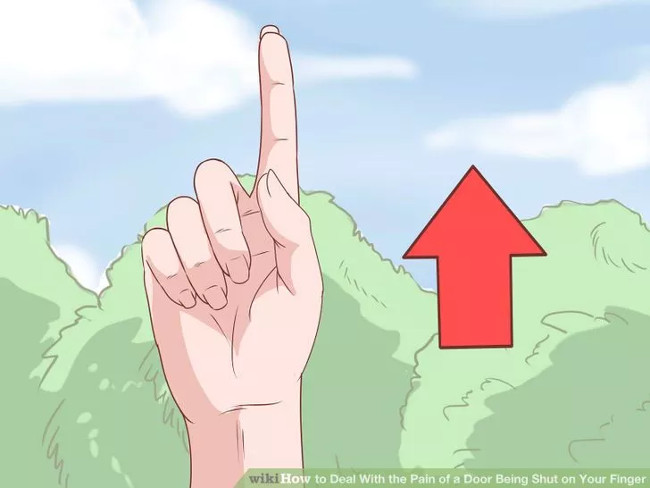
Point your finger at the sky. Similar to cold compressing, the goal of this action is to minimize blood circulation in an injured area to reduce swelling. When applying cold compresses to the wound, you should also raise your hands and fingers to the sky.
3. Check the position of the hand injury
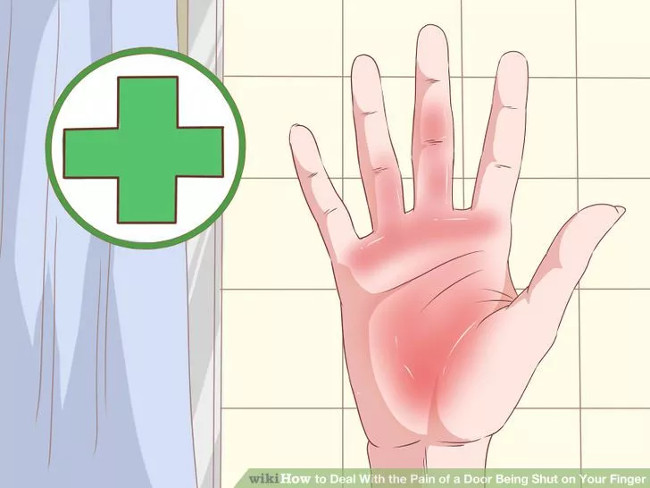
If the worst pain is in the palm or any other affected joint, you should seek medical help as soon as possible. However, if the door is pressed against the fingertip and does not cause injury to the joints or the nail (the area of the underlying skin), the doctor may advise you to rest and recover .
4. Make sure the nail is not injured
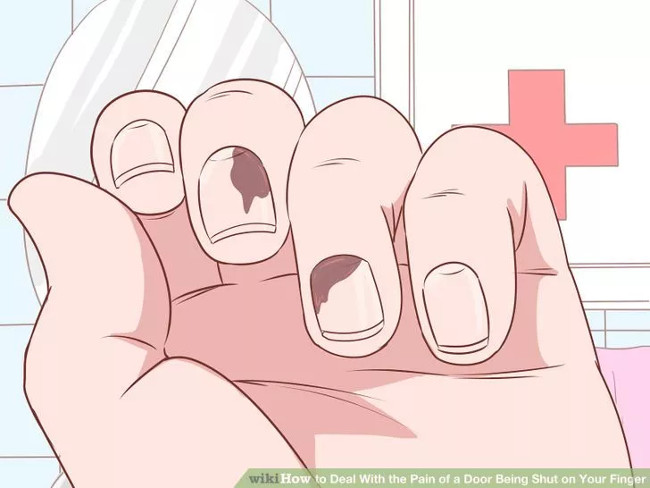
It can be easily recognized if the nail is removed from the skin surface by looking for dark bruises beneath the nail. This discolouration is a sign of hematoma under the fingernails and you should contact your doctor early for advice on how to resolve it. If it's just a small amount of blood, the injury will heal itself. However, a large amount of blood accumulation can be quite painful and requires immediate treatment. The doctor will ask you to come to the clinic to check the amount of blood accumulated below the finger and show you how to do this yourself.
- Need to eliminate blood clots if accumulated not more than 24 hours. If 48 hours have passed, the amount of blood has clotted and cannot be removed. Patients need to conduct neurological tests - blood vessels in their hands. The stretching of the knuckles must be checked.
5. Follow your doctor's instructions to remove the buildup of blood beneath your fingernails
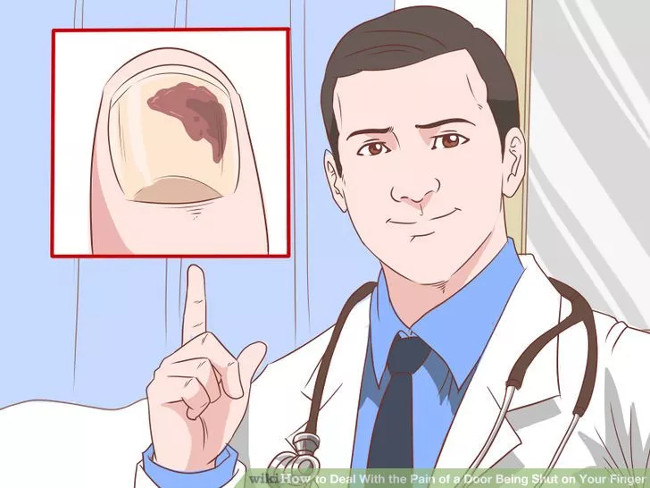
Do not try to remove blood clots without consulting a medical professional before doing so. However, if allowed to do this, you can eliminate the amount of blood accumulated under the nail by following your doctor's instructions. Be sure to clean your fingers before and after the process.
- Preheat a paper clip or pin on the fire until they are red to sterilize. Secure them with pliers or protective gloves to protect your hands from burns.
- Touch the hot metal tip on the fingertip, where the blood is accumulating, without using too much force, the heat will burn a small hole at your fingertips. In most cases, this process will be quite uncomfortable, but not painful.
- Allow blood to escape from this hole to ease the pain.
- Your doctor may prescribe antibiotics for you.
6. Seek medical attention if needed
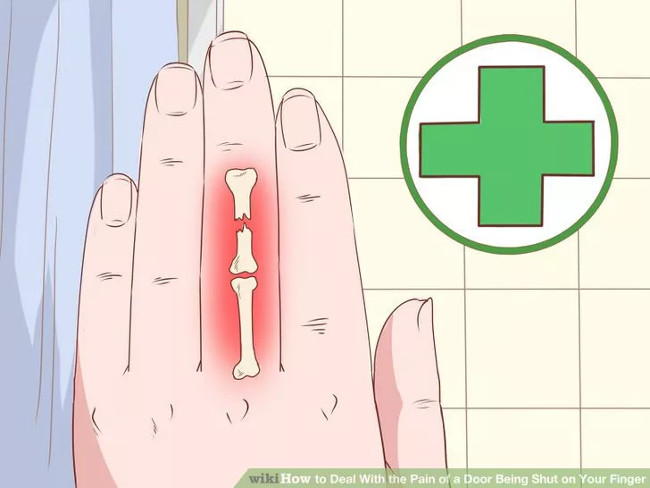
Depending on the severity of the injury, you may just need to apply ice to your hands and wait for your hand to heal itself. However, consult your doctor if you encounter one of the following conditions:
- Can not fold the fingers
- Joint injuries or palm bones
- Injury to the nail
- A deep cut
- Fracture
- Dirt at the injury site should be cleaned to prevent infection
- Any signs of infection (redness, swelling, warmth, pus, fever)
- Injuries cannot heal or improve
Refer to some more articles:
- The first aid procedure Heimlich had when he got a heterozygous object
- Measures to treat and treat food poisoning at home
- How to prevent dizziness and nausea when reading books on the train
Having fun!
You should read it
- What miracle will come to the body when holding hands in these ways?
- 5 surprising health benefits of ginger (along with ginger tea and honey recipe)
- 7 ways to self-check out the very simple health situation at home
- 4 back pain relief exercises that help you sleep well until morning
- 15 miraculous uses of lemon you may not know
- Effective shoulder pain treatment for office workers
- 16 great benefits from lemon you may not know yet
- How to take care and beautify your hands
- A simple, effective, full body massage guide at home
- Why do neck and neck aches hurt in the winter? How to reduce pain and prevent?
- 4 ways to eliminate 'technology sickness', protect your spine and spine
- 8 back pain relief exercises you can do right at your desk
May be interested

10 dangerous things will happen to your body if you sit all day

Just raising your feet for 15 minutes every night can detoxify your liver, kidneys, improve digestion, have you tried it?

Eating lots of cabbage is probably not as good as we usually think

9 types of foods that help you improve your mood quickly

Liver surgery is rare in newborns

The great benefits of sweet potatoes that you don't know yet






 The 'magic' box can open all kinds of smart door locks in 3 seconds
The 'magic' box can open all kinds of smart door locks in 3 seconds How to open a horizontal door washer safely while washing
How to open a horizontal door washer safely while washing Top 3 best horizontal door washer LG today
Top 3 best horizontal door washer LG today Points to keep in mind when buying hand dryers
Points to keep in mind when buying hand dryers The printer is jammed - Causes and ways to fix the error Printer is jammed
The printer is jammed - Causes and ways to fix the error Printer is jammed How to make hand sanitizer dry at home
How to make hand sanitizer dry at home